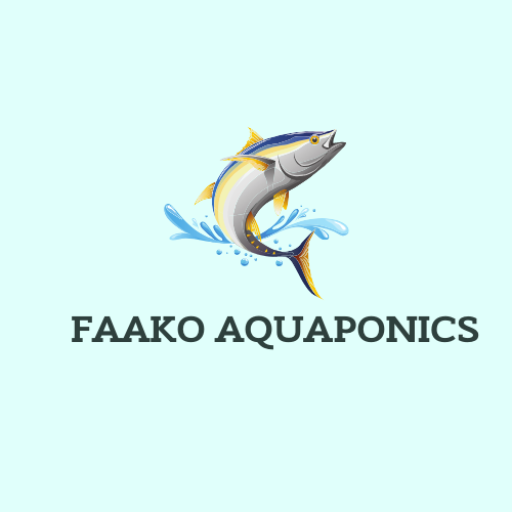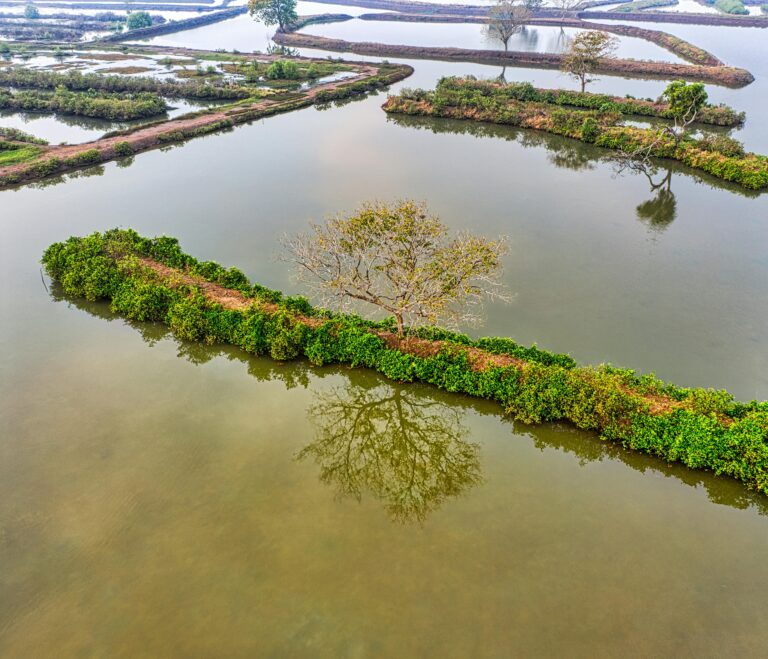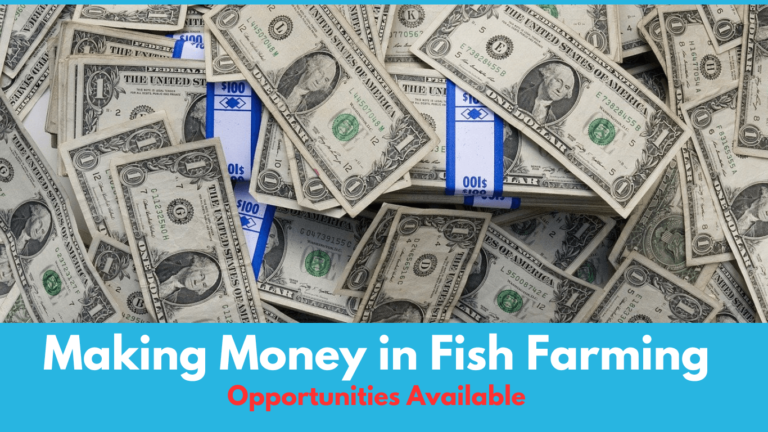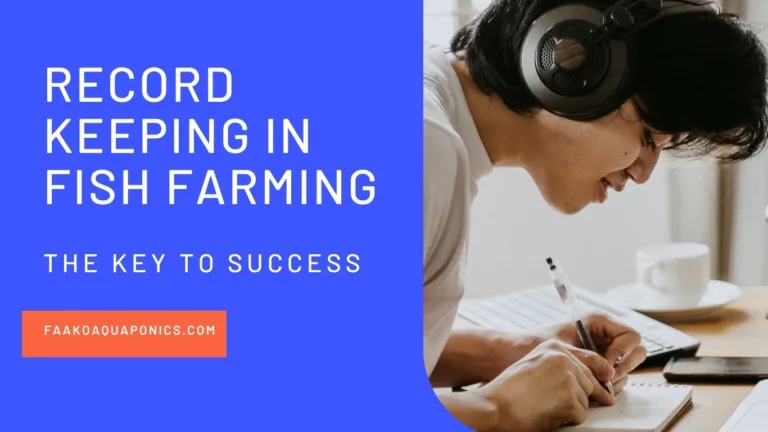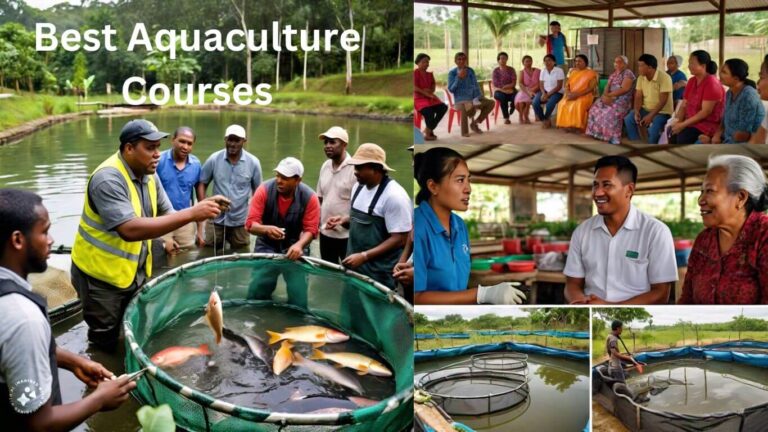Earthen fish pond is one of the oldest and most traditional methods of fish farming. This natural approach to aquaculture has been used for centuries, offering a way to farm fish that closely mimics their natural environment.
But like any farming method, earthen fish pond comes with their own set of pros and cons. If you’re considering this type of pond for your fish farming operation, it’s essential to weigh these carefully.
In this blog article, we shall explore the advantages and disadvantages of earthen fishponds and also maintenance tips and other important aspects of an earthen pond. So you have to read to the end.
1. What is an Earthen Fish Pond?
An earthen fish pond is essentially a man-made pond dug into the ground, with the soil itself forming the walls and base.
These ponds rely on the natural soil composition and ecosystem to maintain water quality, support aquatic life, and promote the growth of fish.
Typically, these ponds are lined with clay or loam soil, which helps retain water and prevents seepage. But contemporary fish farmers line earthen fishponds with tarpaulin and other liners.
Types of Earthen Fish Ponds
– Small-Scale Ponds: Usually less than an acre, these ponds are suitable for small-scale operations or hobbyists. It is also suitable for beginners. Through that, you can learn and expand your pond later
– Large-Scale Ponds: Spanning several acres, these ponds are designed for commercial fish farming and can accommodate a variety of fish species.
– Seasonal Ponds: Often used in regions with significant seasonal changes, these ponds are filled and drained according to the season.
2. Advantages of Earthen Fish Ponds
There are several benefits to using an earthen pond for your fish farming needs, especially if you’re looking for a natural and cost-effective solution.
1.1 Natural Environment for Fish
One of the most significant advantages of earthen fish ponds is that they create a more natural environment for fish. The soil, plants, and microorganisms found in these ponds closely mimic the conditions fish would encounter in the wild.
This can lead to healthier fish, as they have a more varied diet and a more complex ecosystem to live in. In the earthen fishpond, the fish feel like “home” and as the saying goes, “Nothing feels good like home”
1.2 Cost-Effective Setup
Building an earthen pond can be more affordable than constructing concrete or tarpaulin ponds. The primary materials—soil and water—are often readily available on-site, reducing the need for expensive construction materials.
Except for situations where you decide to use tarpaulins and other liners to line the fish pond.
1.3 Enhanced Water Quality
The soil in earthen ponds acts as a natural filter, absorbing excess nutrients and providing a habitat for beneficial bacteria that help break down waste products. This can lead to better water quality with less need for artificial filtration systems.
This again reduces the cost of installing filtration systems like the Recirculating Aquaculture Systems (RAS)
1.4 Temperature Regulation
The natural earth around the pond helps regulate water temperature, keeping it cooler in the summer and warmer in the winter. This natural insulation can create a more stable environment for fish, reducing stress and promoting growth.
1.5 Aquatic Plant Growth
Earthen ponds are conducive to the growth of aquatic plants, providing additional food sources for fish. And also helps maintain water quality by absorbing excess nutrients.
The soil serves as a medium of growth for the aquatic plants.
3. Disadvantages of Earthen Fish Ponds
While earthen ponds have numerous benefits, they also come with challenges that potential fish farmers need to consider.
3.1 Water Loss and Seepage
One of the most significant drawbacks of earthen ponds is water seepage. Unless the soil is naturally clay-rich, water can slowly seep through the pond’s base and walls, leading to significant water loss over time. This can necessitate frequent water refills, increasing costs and labor.
3.2 Predation Risks
The natural, open environment of an earthen pond makes it more susceptible to predators like birds, snakes, and even larger animals like raccoons.
Protecting your fish from these threats may require additional fencing, netting, or other deterrents. And because of the nature of the earthen fishpond, you may find it difficult to protect it with such methods to prevent predation. In situations where you have to, then it will cost you so much.
3.3 Difficulty in Harvesting
Harvesting fish from an earthen pond can be more labor-intensive than from other types of ponds. Draining the pond or using nets can be challenging, especially if the pond is large or has irregular terrain.
In this case, you may require experienced fishermen to harvest the fish. You probably have to train skilled personnel to work on that.
3.4 Disease Management
Managing diseases in an earthen pond can be tricky due to the complexity of the ecosystem. The presence of wild fish, amphibians, and other creatures can introduce diseases or parasites, which may be harder to control in a natural environment.
Quarantining diseased infected fish for treatment would be highly impossible in this type of fish pond aquaculture.
3.5 Algae Blooms
While aquatic plants are generally beneficial, excessive nutrient levels in the water can lead to algae blooms. These blooms can deplete oxygen levels in the pond, leading to fish kills if not properly managed.
And again it will be difficult to get clean or ride off like concrete, tarpaulin, and other types of fish ponds.
4. Maintenance Tips for Earthen Fish Ponds
Maintaining an earthen fish pond requires regular attention to keep it functioning optimally. Here are some key maintenance tips:
4.1 Regular Water Monitoring
Keep an eye on water quality parameters such as pH level, dissolved oxygen, and ammonia levels. Regular testing can help you catch issues early before they affect your fish.
4.2 Predator Control
Implement predator control measures, such as installing bird nets, using scarecrows, or placing fencing around the pond to protect your fish from unwanted visitors. However, that comes at a cost.
4.3 Manage Aquatic Vegetation
Regularly trim and manage aquatic plants to prevent them from overgrowing and causing problems like oxygen depletion or obstructing the water’s surface. Because once they are more, they will compete with the fish for resources like oxygen.
4.4 Erosion Control
Monitor the pond’s banks for signs of erosion, especially after heavy rain. Erosion can lead to sediment buildup in the pond, which can negatively impact water quality. Erosion can also cause the breakage of the bank therefore causing the loss of all the fish
4.5 Regular Stocking
Periodically restock your pond with fingerlings to maintain a healthy fish population. Be mindful of the stocking density to avoid overcrowding, which can lead to stress and disease outbreaks.
Also, overcrowding or overstocking can lead to cannibalism.
5. Is an Earthen Fish Pond Right for You?
Deciding whether an earthen pond is the right choice for your fish farming operation depends on various factors, including your budget, location, and the species of fish you plan to farm.
Earthen ponds can be a fantastic option for those looking to create a natural, cost-effective environment for their fish, but they require careful planning and ongoing maintenance to ensure success.
Conclusion
Earthen fish ponds offer a blend of advantages and disadvantages that make them a viable option for many fish farmers. Their natural environment, cost-effectiveness, and temperature regulation are appealing, but the challenges of water loss, predation, and disease management should not be overlooked.
By understanding both the pros and cons, you can make an informed decision that aligns with your farming goals and resources.
Recommendation
If you are starting up your fish farm and not sure which type of pond, to begin with, check out these posts on concrete and tarpaulin.
